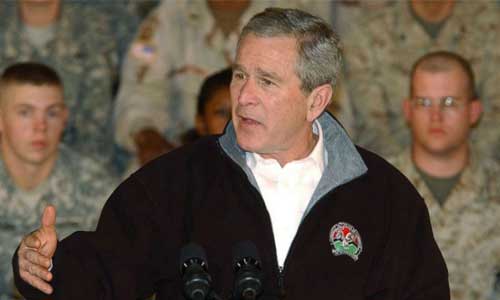George W. Bush was the president of the United States (US) from 2001 to 2009 – the most challenging times for the US as the country faced direct threats from global terrorism. On September 11, 2001, there were airborne attacks on World Trade Center and Pentagon that resulted in the death of about 3,000 people. The attacks were claimed by Al-Qaeda, who were being harbored by Taliban in Afghanistan. Bush reacted to the attacks quickly, formed his war cabinet and launched a war against Al-Qaeda and Taliban in Afghanistan. Though Taliban were defeated quickly, Osama Bin Laden, the Al-Qaeda leader and the mastermind behind 9/11, could not be captured. But, before the situation in Afghanistan could get any better, the Bush Administration launched Iraq war on the pretext that Iraq possessed Weapons of Mass Destruction (WMDs), Saddam Hussain - the Iraqi dictator - supported state-sponsored terrorism and was involved in grave human rights violations. The involvement of the US in the Iraq War further complicated the position of the United States and the war in Afghanistan and by the Bush’s 2nd term in office, the opinion was turning against the aggressive US policies in Iraq and Afghanistan.
The US strategy during the Bush’s tenure and the main aspects of his foreign policy can be best understood through the National Security Strategy (NSS) 2002. The strategy highlighted that the US possessed unequaled and unprecedented strength and influence in global arena, and belief in liberty and free society; therefore, it was responsible to maintaining a balance of power in global politics that must ensure freedom. The strategy also highlighted that America was facing threats from the failing states, and the catastrophic technologies at the disposal of embittered few. Thus, it was vital for the US to defeat such threats and take security initiatives that must guarantee distinct American internationalism. And, in order to attain such a goal, the strategy highlighted that US would take the following actions:
l Preserve human dignity
Make efforts, like forming alliances and security guarantees to defeat global terrorism
Protect the US and the its allies from threats, particularly, the ones through Weapons of Mass Destruction
Work for an era of global and economic prosperity and free-market trade
Promote democracy
Though the strategy highlighted promising goals; some of them proved to be over-ambitious. The main focus definitely remained ‘war against terrorism’, which translated into Operation Enduring Freedom (OEF) in Afghanistan, Global War on Terror (GWOT) - small operations like the ones on Philippines and Djibouti that began immediately after the 9/11 attacks, and the controversial Operation Iraqi Freedom (OIF) that began in the fall of 2002 with the buildup of troops for the March 2003 invasion.
There were certain ambiguities that surrounded the OIF. The OEF in Afghanistan was still in its initial state as far as peace-building efforts were concerned, and in a sense had not achieved its objective, which was the capture of Osama Bin Laden; therefore, stretching the war to the Middle East, which was like a quagmire of controversy and conflicts at the time was never a recommended option. Moreover, the reports on presence of WMDs in Iraq were not authentic. Most importantly, the United Nations was not in the favor of invasion of Iraq; therefore, the UN Security Council did not approve of any offensive in the country. However, Bush remained indifferent to the warnings and launched OIF. The main reasons behind Bush’s push for the war were US’s geopolitical interests, control over the oil resources and the security of Israel – an US ally in the region. Though the move earned Bush reputation at home as a true guarantor of security of the people of the US temporarily, it dealt a major blow to the authority of the UN and its efforts of global liberalism. In the long run, however, the voters in US became tired of the wars in both Iraq and Afghanistan as they kept on lingering for years and cost a large sum of tax-payers money – USD 244 billion in Afghanistan (2001 – 2009), and USD 700 billion in Iraq (2003 to 2009) – and large number of US forces casualties, apart from thousands of civilian casualties.
Thus, the US foreign policy during George W. Bush was mostly reactive and aggressive, which was formed as a response to unexpected attacks on the US. Since the people in the US wanted vengeance after 9/11 attacks, Bush was ready to offer it to them. However, he over-did it by launching simultaneous war in Iraq. Though it won him the 2nd term in office, the move was later criticized for its utter urgency and unilateralism, undermining the very principles of the global liberalism that the US stood for. Moreover, though the operations in Iraq and Afghanistan promised national-building efforts on those countries, they were never carried out, and it is the reason that both the countries still suffer from instability and insecurity. In Afghanistan, the US is now compelled to strike a deal with the same Taliban it had defeated in 2002, and in Iraq, it is withdrawing its forces, leaving the ground for the Russian and Iranian influence.
Home » Opinion » George W. Bush and Afghanistan, Iraq Wars
George W. Bush and Afghanistan, Iraq Wars
| Sajjad Aasim

